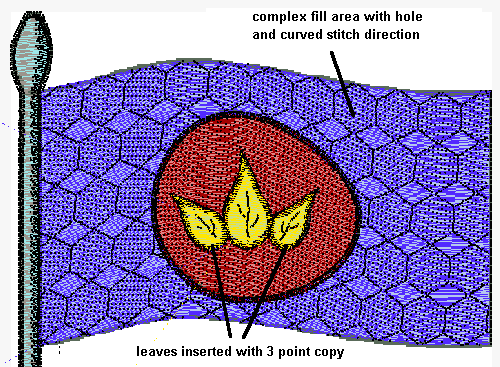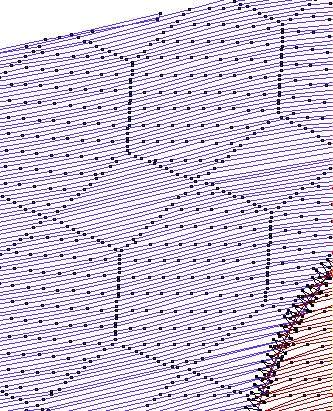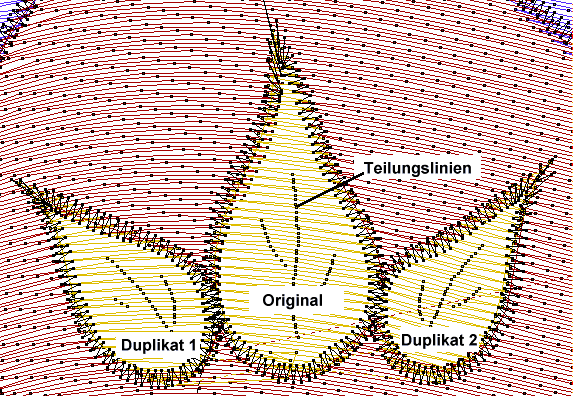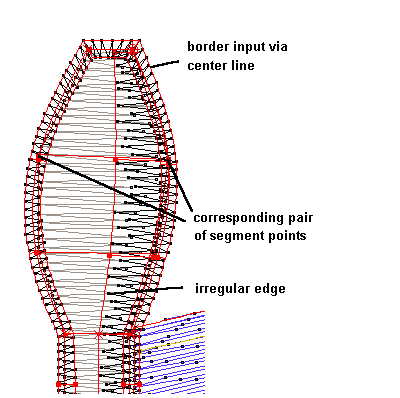examples

The program contains a very efficient algorithm to calculate complex fill areasNPC9PO (tatami stitch areas) with holes34_TZI.. Further on, these areas can be modified with a variety of options as there are :
• Changing the direction of the steppstitches by entering a stitchdirection line4MI2T3 with a straight line, one curved line or several curved lines (between 2 adjacent stitch direction lines a morphing algorithm will be used)
• Choose a division-modeHIDM_TEILUNG (none, centered, regular, irregular, rhythmic, division defined by an angle)
• Choose a edge type1_6RXW0(zigzag, irregular single-sided, irregular double-sided, parallel with acute edge type, parallel with obtuse edge type, macro)
• Choose a stencil42S5YNN. This includes also a combination with another division mode : mixed, only inside a stencil contour or only outside a stencil contour.
The flag in detail :
 1a : Complex Fill - area (blue) with curved stitch direction lines4MI2T3, with stencil (honeycomb pattern), combined with rhythmic division inside the stencil contourSTENCILTEILUNG of the stepstitch area.
1a : Complex Fill - area (blue) with curved stitch direction lines4MI2T3, with stencil (honeycomb pattern), combined with rhythmic division inside the stencil contourSTENCILTEILUNG of the stepstitch area.
1b : leaves inserted with 3 point copyG.W038, curved stitch-direction, division lines11O8VV2
edge type parallel acute6J9EJB. Compared to the original, duplicate 1 has been changed in size, position, rotation angle and slant angle, duplicate2 has been additionally changed by using the mirror option.

 1c : flagpole punched with satin-stitch area, single sided irregular edge2.Z1_NR, no division1MGLOQA, segmented input pairwiseF7IOVC. The border of the flagpole can be done in an efficient way by only digitizing the center line12TBLWM of a segmented automatic.
1c : flagpole punched with satin-stitch area, single sided irregular edge2.Z1_NR, no division1MGLOQA, segmented input pairwiseF7IOVC. The border of the flagpole can be done in an efficient way by only digitizing the center line12TBLWM of a segmented automatic.
Created with the Personal Edition of HelpNDoc: Streamline Your Documentation Creation with a Help Authoring Tool